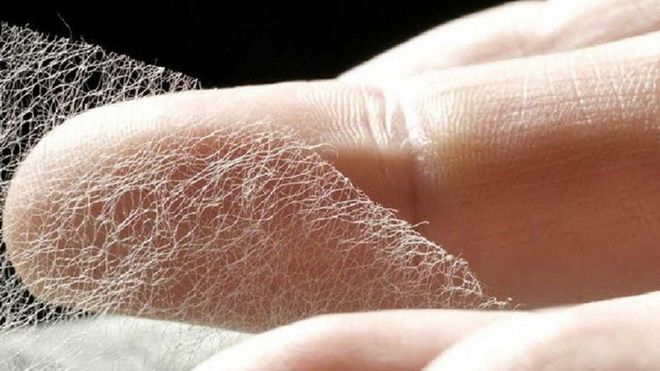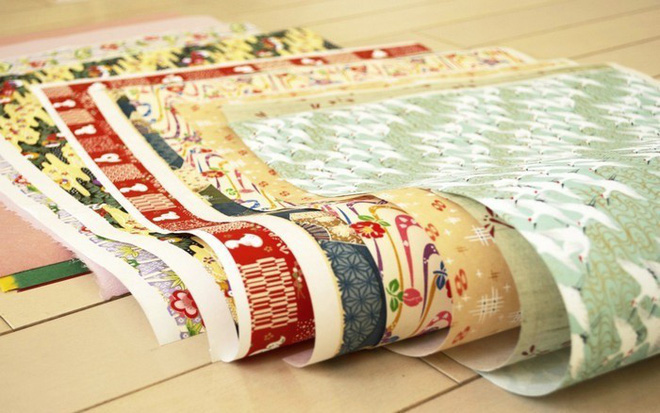Strenuous and meticulous, this is how Japanese people create the world's thinnest paper
In Japan there is a company that is producing the world's thinnest paper with a thickness of only 0.02mm, equivalent to human skin. The advantage of this type of paper is smooth, light but has quite impressive durability.
The famous Hidaka Washi paper mill in Japan is the only place creating the world's thinnest paper with the name washi (wa: Japan and shi: paper). Traditional Japanese washi sheets have another name "tengu joshi".

In the report of the channel Big Big Story, this paper workshop can create human skin-like paper with methods that have been handed down for thousands of years.
Hidaka Washi Company was formerly known as TENGU Export Paper Alliance, originally a small factory located in Kusaka, Kochi Prefecture, Japan in 1949. The workshop was only 10 paper craftsmen at the time and mostly inside a family.
The company's hand-made paper products were then exported for paper making for typewriters. So far, Hidaka Washi still maintains the traditional manual paper making technique but has a little improvement and applies the latest technology.
Hidaka Washi uses a variety of different materials to make paper, in which shrubs (Mitsumata and Ganpi) and mulberry trees. In which Hidaka Washi workshop uses mainly mulberry bark to produce ultra-thin paper. However, based on natural ingredients, the ancient washi paper making process was often seasonal. Winter is considered the best paper making season.
The properties of washi paper are warm, thin, soft but palpable because the fibers are stretched, crushed and stretched instead of chopped. The application of washi paper has a lot to include printing, collage, light curtain, shutters, wedding cards, book covers, kite making even for origami paper art, .

Decorative paper made from washi paper.
This type of paper making is also quite a feat and requires a lot of stages from choosing materials, checking and correcting errors promptly.
First, the factory will buy mulberry from the farm, then boil it in a boiler, remove the bark, tie it in bundles, dry and make fibers.

The bunch of dried mulberry trees.

They will be boiled through boiling water first.
The paper yarn is then continued to be mixed with water and lake and spread on the tray before being pressed into ultra-thin sheets of paper.

The worker used bamboo to mix paper with the lake.

They use their hands to pull the fibers to increase the toughness of the paper.
The longer the paper fibers are, the more durable and softer the paper will look. This process also has one more step of extracting excess water from paper. The sheets of paper will then continue to be separated and remove impurities on the paper before being exposed to the sun.

The paper is then put on the machine to stretch and form sheets.
It is a communication process but today thanks to the help of machines on a much simpler and simpler process.

The finished product is an ultra-thin sheet of paper.

The paper is so thin that you can see through it easily.

The paper is applied to print very conveniently.
The Japanese have a long tradition of making paper with a history of over 1000 years. In the past, Japanese people relied heavily on Chinese paper making methods, after which they developed their own paper production methods.
Traditional paper making in Japan began to flourish from the 17th-18th century and has been passed down through generations to this day.
Although it was the 21st century, washi paper still has a very unique vitality in Japanese culture and life.
Visit the world's thinnest paper production workshop, thin skin of human skin in Japan.
- Up to the time the laptop is folded
- The secret of the type of Tibetan paper used to keep a thousand-year-old scriptures does not rot
- Exquisite Japanese wagasa paper umbrella
- Video: Paper boat can carry people floating on the lake
- Japanese public toilets often have folded paper rolls like this, the reason is ...
- The first to create the world's thinnest 3D images
- Video: 'flying' paper airplane is nearly 70m
- World's thinnest clock face
- Paper-thin glass can withstand the impact of 150km / h
- Interesting history of toilet paper
- Origami paper folding kayaks
- Video: How to create a blade with plastic and wood cutting paper
 'Fine laughs' - Scary and painful torture in ancient times
'Fine laughs' - Scary and painful torture in ancient times The sequence of numbers 142857 of the Egyptian pyramids is known as the strangest number in the world - Why?
The sequence of numbers 142857 of the Egyptian pyramids is known as the strangest number in the world - Why? History of the iron
History of the iron What is alum?
What is alum? Innovations that change the future of humanity: Kobe Paper Tube House!
Innovations that change the future of humanity: Kobe Paper Tube House!  Create a paper and water-powered battery that's as powerful as an AA battery
Create a paper and water-powered battery that's as powerful as an AA battery  Paper plane made a record flight of more than 77 meters
Paper plane made a record flight of more than 77 meters  New paper made from pollen can be printed and erased many times
New paper made from pollen can be printed and erased many times  Singapore expert develops biodegradable flexible paper battery
Singapore expert develops biodegradable flexible paper battery  Successfully made a piano as thin as a sheet of paper
Successfully made a piano as thin as a sheet of paper 